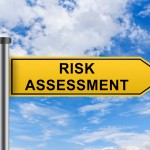The foundation of your organization’s defense against cyber theft is a mastery of IT risk assessment. It is an essential part of any information security program, and in fact, is mandated by regulatory frameworks such as SSAE 16, SOC 2, PCI DSS, ISO 27001, HIPAA and FISMA.
by regulatory frameworks such as SSAE 16, SOC 2, PCI DSS, ISO 27001, HIPAA and FISMA.
Compliance with those frameworks means that your organization not only has to complete an IT risk assessment but it must also assess and address the risks by implementing security controls.
In the event of a breach, an effective IT risk management plan—which details exactly what your IT department is going to do and how they’re going to do it—and implementation of the critical security controls that have the potential to save your organization millions of dollars in direct response costs, legal fees, regulatory fines, and costs associated with rebuilding a damaged corporate reputation.
Evaluating the potential compliance, operational and reputational risks to your organization and then ranking their importance and likelihood is not easy. Even more challenging is developing and then implementing the IT risk management plan. If your IT department is undergoing an IT risk assessment now or strengthening its cybersecurity strategy, look to qualified industry professionals and innovative technologies to help you master the process and stay compliant.
Here are six tips to keep in mind:
1. Get professional help. Hire an independent third party auditor and/or attorney.
Your IT hosting provider may even provide compliance and auditing services. These consultants can provide a comprehensive risk analysis, audit assistance and privacy and security guidance, including identifying potential risks, exposures and liabilities.
2. Use private cloud technology to protect sensitive data. Moving all or part of your infrastructure to a professionally managed, compliant private cloud offers benefits that drive business value. Your organization’s data and apps are hosted by experts in an environment that is independently audited for the specific regulatory compliance that you need, which is a big help in passing your own audit. Also, your IT department is freed up to focus on strategic projects without bearing the burden of solving compliant hosting complexities, hassling with maintenance and support, managing staff allocations, and providing expensive training.
3. Invest in annual IT risk assessments. Be sure to work with an unbiased, fully independent auditing team, which typically includes certified engineers and compliance experts. Comprehensive risk assessments pinpoint the many risks faced by your organization and address network security vulnerabilities. They are designed to give you the education, expertise, support and protection that you need to plan your security strategy, pass your audits and maintain a continuously-compliant IT environment.
4. Schedule frequent penetration testing and vulnerability scans. These uncover critical IT vulnerabilities and show how well you are protecting your network and data. Ask your auditors, compliance experts or compliant hosting provider to perform monthly or quarterly tests, help you to establish critical processes (such as data encryption and hardened authentication), and develop a clear understanding of how to avoid IT compliance disasters. Get a full report on external, internal and web application testing as well as strategies for remediation.
5. Ensure application security. A good auditor or compliance team can help secure the design, development and deployment of your web-facing applications by thoroughly assessing any vulnerabilities and addressing design flaws or security gaps that impact compliance. Managing and remediating risks now saves time and money later.
6. Educate employees about security. Frequent security awareness trainings and daily reminders throughout the workplace will help reduce violations. Your auditor or compliance team should customize a workplace awareness program for your business.
Ensure that the training is situational and fully engaging.

